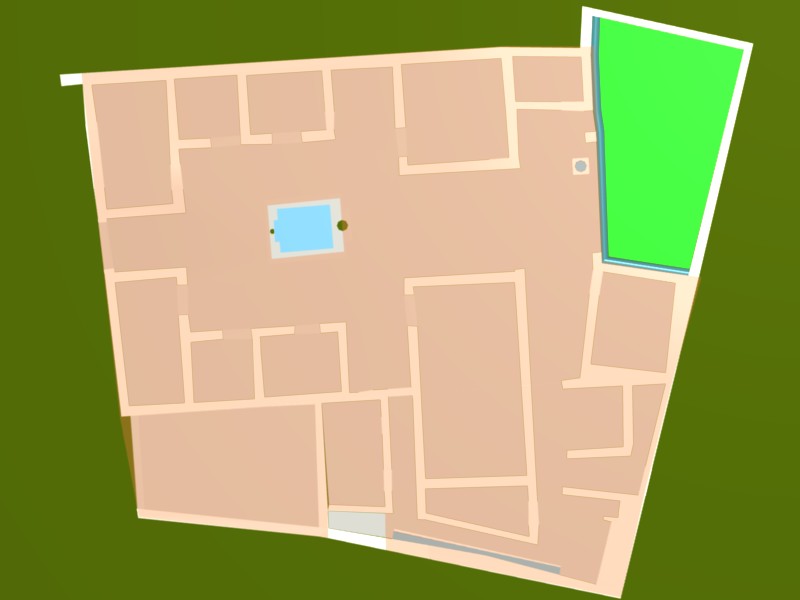
Although all based on the same property with no radical changes in basic form, the images produced from these models look quite different. The level of detail appropriate for illustrating different hypothetical roofing configurations was low; consequently these models were much quicker to produce than the others. The wall decoration had a similarly simple structure but colouring the wall textures was a time-consuming job. The higher levels of detail in the models created for presenting the models to the public meant that these took by far the most time and effort and required a much higher level of modelling skills. Lighting in particular took much more effort to create a convincing result. It can also be seen that the more detailed models do a much better job of showing interpretations of how the house may have looked than the simpler, untextured models. To illustrate this, Figures 66 and 67 are images taken from models with differing levels of detail and realism.
Figure 66: Relationship of roof to water features. Level of detail changes when mouse pointer is moved over image

Figure 66 illustrates how much clearer the low detail model is in illustrating the relationship between the hypothesised roofing scheme and the known water collection features. In Figure 67, the first image not only looks more realistic due to the increased detail but also has a lighting scheme that fits the idea of a dingy storeroom better. As the other two models were created for completely different uses they have low levels of detail and a very clear lighting scheme.

Figure 67: The same view of room 11 from three different models
I have demonstrated that different outcomes of the modelling process require different approaches. Just modelling for its own sake is not enough; models for different purposes and different audiences require different approaches. The levels of detail used for illustrating the house to the public in alternative conditions are overly complex for the task of communicating the extent of the upper floors. A clear presentation of the wall decoration gives a very biased impression when taken as a slice of life in the ancient House of the Surgeon. All models are abstractions of the available data; appropriate abstraction is the key to effective communication. Modelling also becomes much easier and more efficient when the reason for the model and the intended audience are known at the start.
3-D modelling has many roles to play in a modern archaeological project. If done well it can aid interpretation, present a synthesis of many different forms of data at once and help communicate a project's results to a wider audience. Doing this effectively and efficiently requires an informed archaeological researcher to make explicit decisions about the appropriate levels of abstraction needed in each model.
© Internet Archaeology/Author(s)
URL: http://intarch.ac.uk/journal/issue23/3/conclusions.html
Last updated: Tues Feb 5 2008